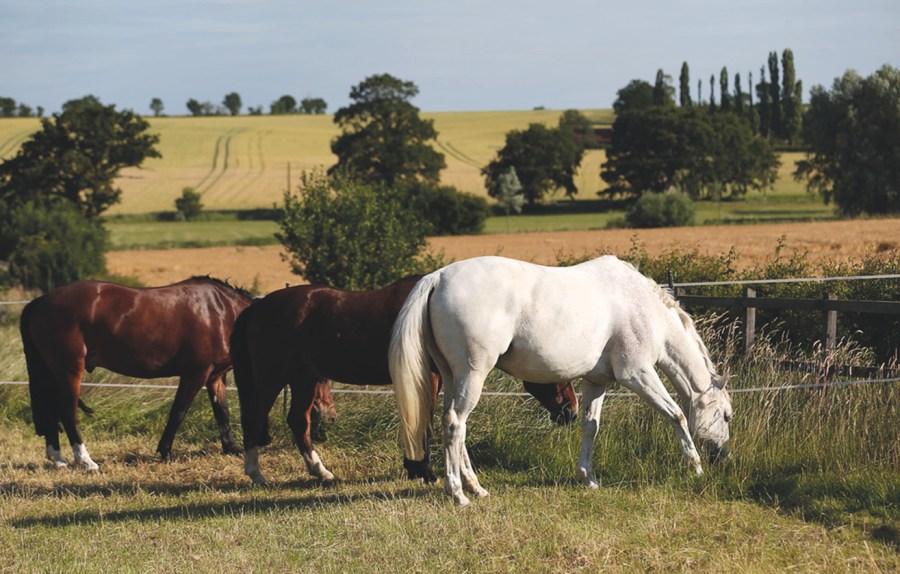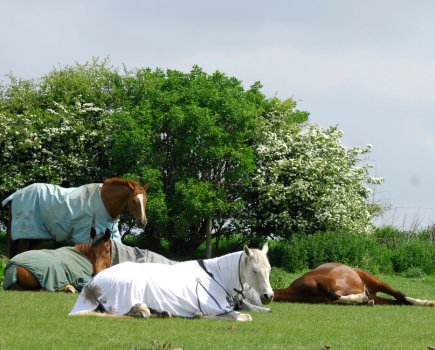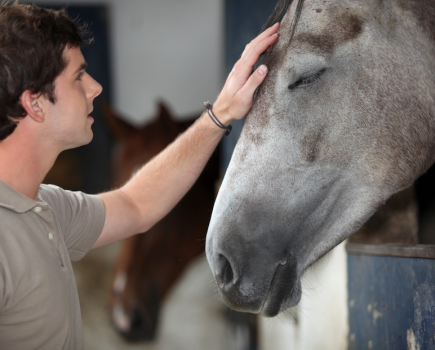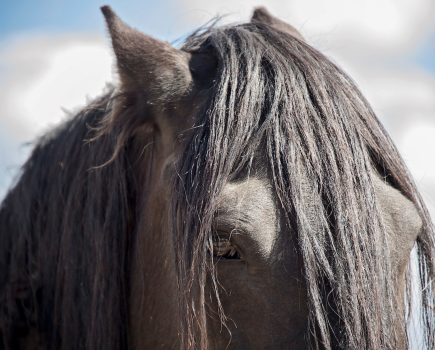Strip grazing is one of the easiest ways to help control your horse’s grass intake. Systems are relatively easy to install and recent research has shown that they can help to restrict weight gain.
Clare Barfoot RNutr, marketing and research development director at Spillers, explains what strip grazing is, the benefits and how to install this system effectively.
Why it’s necessary
Rates of obesity are considered to be as high as 70% in some populations of ponies, and with it comes an increased risk of serious health issues such as laminitis, joint strain, respiratory problems, heat intolerance and reduced fertility.
With grass growing in abundance at this time of year, the risk of weight gain and associated health problems is significantly increased. This applies to all breeds and types of horses and ponies.
How it works
Strip grazing refers to sectioning off a smaller area of your field by using electric fencing, which is moved to give field occupants controlled and gradual access to fresh pasture.
It’s suitable for horses and ponies grazing individually as well as for those grazing in groups — as long as the field is wide enough to enable every member of the group to access the new grass without any bickering.
The system can be used with or without a back fence. If a back fence is used this is moved by the same amount as the lead fence each day to keep the overall grazing area the same size.
Without a back fence you have the advantage of only needing one electric fence. This way the grazed area will obviously become larger each day, but in a recent study this was actually no less effective than when using a back fence as well.
Usually, the fence is moved once a day, but the most appropriate distance will vary according to the size of the field, the quality and quantity of grass, the rate of grass growth, the number of horses and the body condition score (BCS) and weight control programme of the occupants.
Kit you will need
You will need the following equipment in order to set your field up for strip grazing:
- Electric fencing tape — make sure it has a suitable break point in the event that a horse or pony should get tangled in it.
- Electric fencing posts — choose the right height of post for your horse; some may think nothing of jumping the height of short posts.
- Electric fence energiser — these are available as solar powered, battery powered or dual powered.
- Electric fence tester — to check that a suitable voltage is running through the tape.
- Spare posts, tape and batteries — just in case.
Related to this topic…
- Equine vets report a ‘sharp increase’ in cases of laminitis
- Overfeeding and underworking: the equine obesity epidemic
- Effective ways to get your horse to burn more calories
Look out for cheats!
Some crafty horses or ponies may cheat and lean over the fence or poke their head under it in order to eat more than their daily allowance.
If this happens you may need to add a lower strand of electric tape or a top strand, or use taller electric fence posts to raise the overall height of the fence.
Always make sure the fence is electrified. Some horses are particularly artful when it comes to noticing that the energiser isn’t working or that the electric charge running through the tape is weak. They will soon learn that it’s fine to ignore it — which is not what you want.
Maintenance
As with any type of turnout, daily poo-picking is an essential part of your grazing management and worm control plan.
If you are back fencing too, remember that you always need to provide access to water — this may result in needing to invest in a longer hosepipe and alternative buckets.
Monitor your horse’s weight and check his body condition regularly. It may take several weeks for his body condition score to change, but weekly weigh taping will help you keep track of any changes in weight.
Strip-grazed fields need time to recover after they have been used and additional attention to pasture management, including weed control, may be needed.
Avoid overgrazing to reduce the risk of soil ingestion and pasture damage.
Main photo credit: Spillers Horse Feeds









